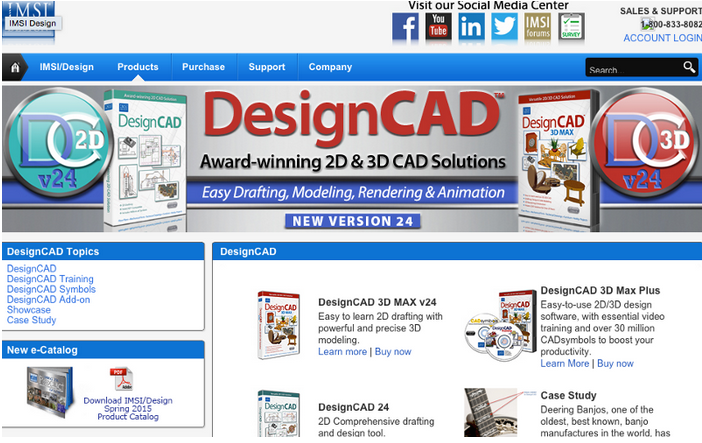CAD today isn’t about design | Modelo Modelo wants to change that.
Since I’m an architect by training, I think people construct this stereotypical image of me using pens and paper to design magnificent, detailed buildings. Although I’d like this vision to be true, it is not. Instead, we architects intensively use computer software every day for creation. One type of software in particular is CAD (computer aided design), which you’ve probably heard of if you pursue 3D design — whether it be architecture, mechanical engineering, or industrial design.
CAD software has become a giant industry driven by design demand. But don’t get confused — even though the software is for designers, the CAD industry isn’t really about design at all. Today’s leading CAD design software was likely proposed by managers and built by software engineers. All of the necessary tools are there for designers to use, but the way in which they’re presented simply isn’t up to par with the modern aesthetic and interface. The clunky software with an overwhelming breadth of options is then sold to visually-driven designers. CAD is still widely used, but the fact is the people who are building the software are disconnected from those who are using it.
So what’s happening?
In the last several years, Sketch and InVision have developed and designed tools for graphic and web designers. Both stand out because they diverge from the old way of thinking about making software; they instead focus on producing design technology for designers. Their efforts are rooted in understanding what designers really want, what they care about, and how they work every day.
Compared to software engineers, designers pay more attention to visual details, spending hours tweaking design elements. We work with a variety of media — Moleskine notebooks, Pilot razor pens, Adobe Suite, Rhino — to give life to our ideas. We mostly prefer iOS to Android for its user experience. Our favorite colors are of the neutral orientation. We designers are fundamentally a different group of people from software engineers, so we have tremendously different work habits.
The reason is simple: designers don’t know how to build their own software, engineers do. And very few of them can share insights about design. Not to mention, understanding 3D design presents a whole new level of complexity to people not practiced in design thinking.
CAD started with Mr. Ivan Sutherland, who created “SketchPad” as he pursued his doctoral degree at MIT. His work became foundational to the formation of computer graphics, leading to the development of graphical user interface (GUI) and object-oriented programming. In his doctoral thesis, he states:
“It is our intent with this example to show what the computer can do to help us draw…”
He intended to have the machine help people, not regulate them. But the programs that grew out of Sutherland’s preliminary work often feature tools that hinder, rather than help, the design flow.
Programs like AutoCAD, Rhino, Maya are strong from the software development perspective. But these programs’ UI/UX environment is a visual catastrophe. Compare Sketch’s future-forward user experience, above, with AutoCAD’s 3D design interface.
Not that great, huh? Why does it seem like these tools don’t support designers? Well for starters, they’re overcrowded, confusing, and clunky. Only the most seasoned users can call themselves experts, priding themselves on learning to wade through the murky interface, memorizing each button and command.
How Can We Make A Change?
Making change in a well-established industry is going to be difficult. All businesses in the 3D design world depend on hefty software subscriptions, which is why the CAD software development industry is in constant demand. They are dealing with complicated users from the oldest industries, like architecture and manufacturing. There isn’t much initiative for the large 3D software developers to make great change. Once they are in the game, they will stay there and expand the breadth of their capabilities (take a look at this list of Autodesk acquisitions). Hyper-simplification of the tool is not exactly in the business model.
Yet, the ecosystem is changing. We’ve experienced so much new tech coming into the market — 3D printing, portable 3D scanning, democratized VR/AR. This is not the era when your 3D software will sell because it’s the first of its kind. The world is full of software and users are tired of choosing and switching. People need both a tool and a team of designers that really care about their needs, their workflow, and their feelings.
This attention to the work-style of designers was our primary motive when we started Modelo. The goal was to leverage design in order to express the urgent needs of our fellow 3D designers. We trust that the rise of web applications and 3D technology will bring us joy while we work together. At the end of the day, it isn’t about CAD. It’s about design, and it always will be.

